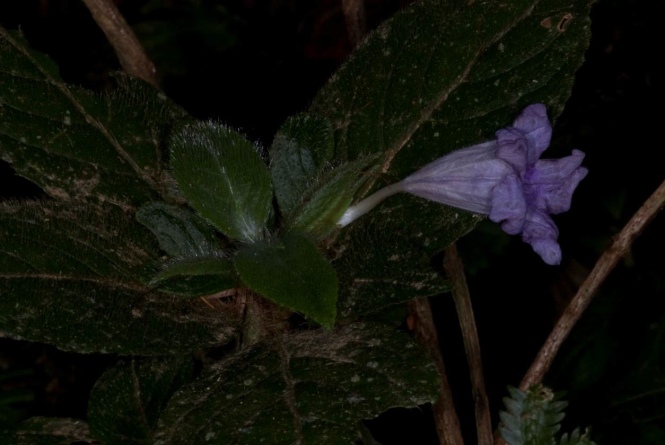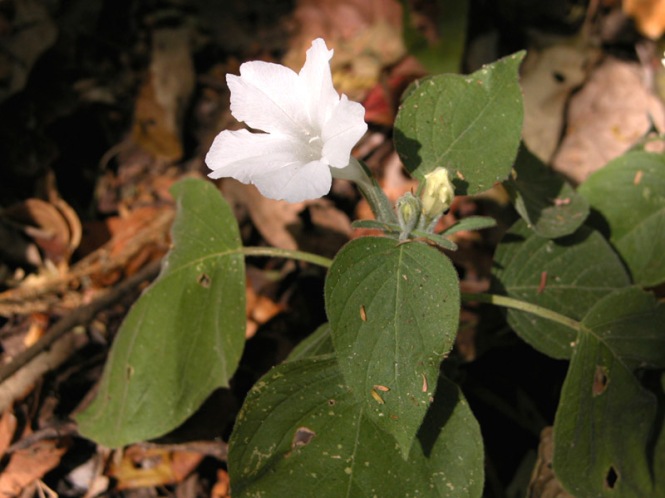Water-loving (potam-, -phila). You and me both. I found this species on what was one of the most memorable days of my one month stay in Colombia. January 19th, 2015. We stayed the night before in the small but lovely community of El Queremal, in the Department of Valle de Cauca. Our plan was to overnight as close to the collection locality as possible because we had sensed it was going to be a long, tricky, one way drive from this quaint village to wherever our next meal was. We were right. We set out at 6 AM from our hotel (El Campanario: highly recommended) and within the hour we spotted a very weak wooded, small white flowered herb bordering the road (if I can call it a road). It was Ruellia potamophila. We had failed to find the species 3 days earlier in a different location that we drove two days for. But here it was: about 10 plants. Very rare, despite me crawling amongst the vertical slopes to find more. Take what you can get. I’ve never seen anything like this species: it is as distinctive as any Ruellia gets. I’m predicting membership in the Physiruellia clade, and I cannot WAIT to sequence it.
The stretch of road between El Queremal and Buenaventura cuts through some of the best habitat (mixed primary and secondary forest, but even the latter of exceptional quality) that I laid eyes on in this country. It was supposed to take about 4-5 hours. Somehow, close to 14 hours after our morning arepas and coffee, we reached Buenaventura with both cars intact (as an aside, this is not a route that would have been on the recommended tour for 2WD sedans). In Buenaventura, the rain had been so intense all day that city streets were flooding some 4-6 feet in places… far beyond the drivable stage, which by my standards are already rather extreme. These conditions forced our retreat from the area where one finds hotels, and at 9 PM, we pointed the cars towards Cali for a dreadful 2.5 hours additional riding time. We found food along the way, which cost us another 1+ hours. We reached by midnight then pressed plants for several additional hours, finally calling it a night around 3 AM. Longest field day ever, but one I will never forget, and one that brought me one species closer to seeing every species of Ruellia alive and in the cellulose. My tremendous thanks to Grant, Manuel, Nico, Tom, and Arecio for enduring….
Every species has a story, but only a fraction of those stories get recorded. Here’s to you, Ruellia potamophila.
Wild collected, Colombia, Tripp et al. #5219 (COLO); Photos by E. Tripp















